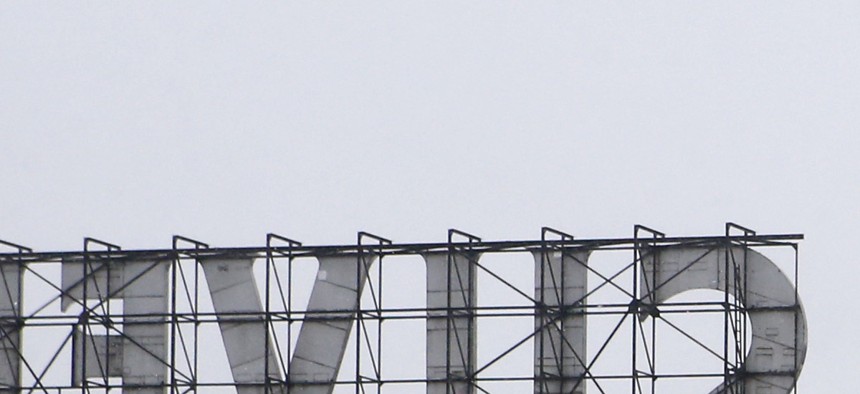Did Andrew Cuomo Overreact When He Closed New York City’s Subway?

A New York City subway train runs along a section of elevated track in Queens following the system's reopening on Tuesday. Jason DeCrow / AP Photo
The governor ordered the system to close because of the blizzard. But as smartphone apps showed, the trains kept on running.
New York City got the green light to reopen for business on Tuesday morning after Gov. Andrew Cuomo ordered a regional travel ban and shuttered the city’s subway system—the first time ever for a snow event.
While the blizzard has been considerably stronger farther to the east on Long Island and in New England, the nation’s largest city didn’t get as much snow accumulation as some had forecasted. “The crippling storm predicted for downstate New York failed to materialize,” Capital New York reported.
And that has opened the door to questions about whether the governor’s order to cease subway service was more about politics and optics rather than common sense.
As Benjamin Kabak wrote at the authoritative New York City transportation blog Second Avenue Sagas:
The problem with Cuomo’s decision is that it doesn’t make sense. It’s a noble goal to keep cars off the road so that emergency response teams and plows can move through the city unimpeded. But it ignores the reality of New York City — an often inconvenient one for Cuomo — to shutter the subway.
"The system is going to come back online much faster than if the trains were exposed to the conditions." http://t.co/RcyszUGsqV
— Andrew Cuomo (@NYGovCuomo) January 27, 2015Cuomo didn't have any regrets closing the system.
“The system is going to come back online much faster than it would have if the trains were exposed to the conditions and they were shoveling out this morning,” the governor said in a Tuesday morning press conference. “So . . . if you tally it up, I don’t know if this wasn’t the more prudent course of action in any event because at the end of the day, it may have actually brought us back to full operating capacity sooner.”
That’s in part because the subway didn’t actually shutter operations overnight during the storm.
The NYC Subway Time app, which relies on real-time tracking data from the Metropolitan Transportation Authority, showed that the system, which offers 24 hour service, kept on running overnight.
It just did so without passengers with so-called ghost trains.
As The Brooklyn Paper points out, it’s not an simple action to shutter the subway system. MTA sources tell the newspaper that the agency was caught off guard by the governor’s order to close the system on Monday night:
The halting of subway service is the first ever for a snowstorm. It is ill-considered because an actual turning-off of the entire system requires moving all the cars to far-flung facilities for storage, as the agency did during Hurricane Sandy, when flooding was a concern, and rebooting from that takes ages, the insider said. Emergency personnel will be riding the trains overnight while no one else is allowed to, per the source. The closure will strand people and put lives at risk, not because the subways can’t run, but because Cuomo wants to look good, the source said.
The vast majority of New York City’s subway system is underground or is elevated, which makes the system resilient in the face of snow accumulation on the surface.
There have been previous incidents of subway trains getting stuck along tracks that are on the surface or are in open trenches. It would have made sense to alter service for those problematic areas, The Brooklyn Paper reports, but not shutter the whole system, which in effect closed the entire city.
Regular train operations are critical to keep tracks clear of snow, as well. In similar snow situations, the MTA moves trains out of outdoor rail yards and into underground storage, often along out-of-service express tracks, which allows limited service to continue throughout the system.
The MTA will offer limited subway service on Tuesday with full operations expected on Wednesday.






